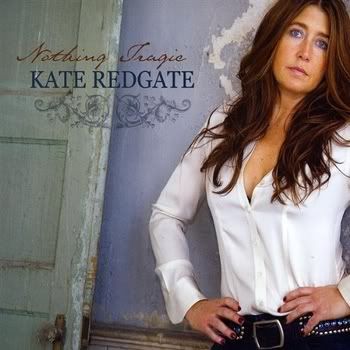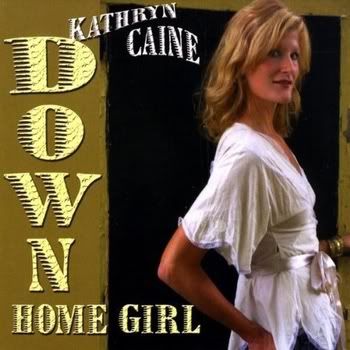
A group of woman gets together to make a patchwork quilt. The rules of the game say that each is to bring a patch of cloth with something beautiful on it. None of the others is to know what she brings. The result is a new kind of beauty, fascinating in its variety, and yet somehow of a piece. Musical genres can be like that. Each artist works within or around the conventions of the genre, and the genre is richer for it. Here are five women who each bring their scraps of cloth to country music. Country can perhaps be more stale and cliché ridden than any other genre. What makes it work, when it does, is that the artist is fully invested in it emotionally. These women are, each in their own way.

Leslie Krafka: The Best For Me
[purchase]
Leslie Krafka understands the form of country music very well. Her sound comes from Texas wing of the genre, where productions have a little more space in the music, and instrumental touches like the wonderful mandolin part heard here are not unusual. Krafka has a fine voice for this too, warm with an occasional sense of wonder. But what stands out for me are her words. Wandering Troubadour won Kafka a Song of the Year award from the Houston Songwriters Association for its contemporary take on gypsy romance, and The Best for Me is just as good. This time, Krafka presents a kind break-up song. The narrator knows that it is time for her to spread her wings, but she also expresses love and gratitude to the partner she is leaving. It’s a refreshing change from the bitter break-ups that are so much a part of country music, and Krafka makes it completely convincing.

Susan Cattaneo: Fall to Fly
[purchase]
Fall to Fly presents a woman who is just at the point of daring to love. The winter imagery here is a great touch. Susan Cattaneo has the perfect soaring voice for this, with quiet moments coming at the perfect times in the song. The key here is the production. Do too little, and a song like this sounds almost like a caricature, with the vocal unsupported. Do too much, and the message gets buried in a wall of sound that makes the whole thing sound artificial. Cattaneo and her producer Jan Stolpe get it perfect here, and the result is a soaring love ballad that is utterly convincing. Bonus: Jake Armerding, who long-time readers here have heard both solo and with Red Molly, does the background vocals here.

Kate Redgate: Cold November
[purchase]
Kate Redgate has a voice with some wear in it, and that works perfectly here in a song about a relationship gone cold. Late autumn and a house in disrepair serve as metaphors for a relationship the narrator can’t quite bring herself to talk about in direct terms. The wound is still too raw. The honesty comes through loud and clear, and Redgate conveys the emotions perfectly, and never overdoes it. The drummer uses mallets instead of sticks on this one, which gives the song an unusual sound that works perfectly.

Amy Black: One Time
[purchase]
If Amy Black ever does an album of acoustic blues, I hope someone lets me know, because she has a great voice for it. The beginning of the song One Time is blues, and that’s just what I mean. But then the song goes country, and Black shows how the two forms are connected. The song has the narrator advising a friend to leave a man who mistreats her. This kind of song is common to the blues and country genres, so a great performance is what makes it worth doing. In terms of production, the harmonica and fiddle are both used beautifully here.

Kathryn Caine: The Fall
[purchase]
On The Fall, Kathryn Caine is not backed by the David Grisman Quintet, circa 1979. But that’s the sound the band gets, and it’s as exciting now as it was then. With that kind of jazziness going on underneath, Caine could have chosen to do some kind of jazz singing over the top. The vocal delivery that Caine chooses is what places the song on the country spectrum. Her performance has grit and swing, but she hits the beat straight on, without the rhythmic ornamentation that would make this jazz. The combination is completely unexpected, and it works beautifully. The song opens with the narrator warning a new lover that she won’t allow herself to be hurt this time. Then she realizes that he feels the same way. They decide that neither one will be hurt, and the song becomes a statement of determination that this relationship is going to be the one. The trick to putting over this kind of song is to avoid stridency, and Caine succeeds brilliantly.






0 comments:
Post a Comment